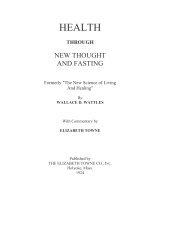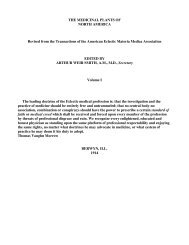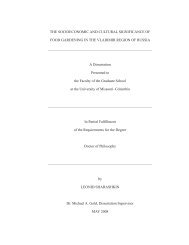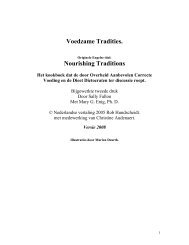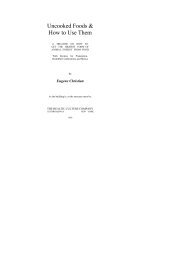FACTORS OF SOIL FORMATION - Midlands State University
FACTORS OF SOIL FORMATION - Midlands State University
FACTORS OF SOIL FORMATION - Midlands State University
You also want an ePaper? Increase the reach of your titles
YUMPU automatically turns print PDFs into web optimized ePapers that Google loves.
depth of 10 in. under pine-heath associations and to 25 in. under a<br />
mixed forest rich in mosses. In another locality, the sand deposit had<br />
become covered with a mattress of raw humus, and enough<br />
podsolization had taken place to permit a photographic recording of a<br />
thin bleached A 2 horizon and a dark orterde zone (B horizon). Tamm<br />
estimates that a normal podsol with 4 in. of raw humus, 4 in. of A 2<br />
horizon, and from 10 to 20 in. of B horizon requires from 1,000 to<br />
1,500 years to develop. Older soils, presumably 3,000 to even 6,000<br />
or 7,000 years of age, do not exhibit horizons of greater magnitudes.<br />
Evidently in these localities profile formation has come to a standstill.<br />
We owe to Tamm a series of chemical data on podsols from<br />
alluvial sand terraces the ages of which are known with considerable<br />
certainty. In Fig. 20, an attempt is made to present the analyses in the<br />
form of time graphs. The leaching factor β of the older profiles (β =<br />
0.947) has values that are characteristic for podsols in general (Table<br />
23, page 120). The behavior of the silica-alumina ratio (sa) of the soil<br />
also is instructive. Compared with the C horizon, the sa value of the<br />
bleached layer A 2 passes through a minimum at 100 years and then<br />
tends toward a maximum that corresponds to a relative accumulation<br />
of silica in the A 2 horizon. Tamm also determined the amounts of<br />
limonitic iron that may be taken as an index of the translocation of<br />
colloidal iron hydroxide. Bleaching signifies removal of Fe(OH) 3 ;<br />
darkening or reddening of the soil layers results from accumulation of<br />
FIG. 20.—Time functions for Swedish podsols.<br />
this compound. To bring out the contrast more forcibly, the ratio<br />
limonitic Fe 2 O 3 / total SiO 2 of the B horizon was divided by the same<br />
ratio for the A 2 layer.<br />
As may be seen from the lower solid curve in Fig. 20, there is in<br />
the initial phase of podsolization relatively more limonite in A 2 than in<br />
B, but at later stages the relationship is reversed. The magnitudes are<br />
indicative of substantial shifting of iron compounds.<br />
A notable feature, common to all three curves, is the declining<br />
change of slope with increasing age. After drastic changes during the<br />
initial phases of profile formation, the soil characteristics are tending<br />
toward a more or less steady state, the equilibrium state or mature<br />
profile.<br />
In this connection, two recent papers by Aaltonen (1) and by<br />
Mattson (13) are pertinent. Aaltonen studied the formation of the<br />
illuvial horizon in sandy soils of Finland. He concludes that it grows<br />
from the bottom up. In young soils, the colloidal particles are<br />
flocculated at greater depth than in old soils. Consequently, during the<br />
process of podsol formation, the portion of maximum colloid<br />
accumulation moves upward (Fig. 21). The behavior of the A horizon<br />
is not yet fully clarified. Aaltonen tentatively assumes that the




